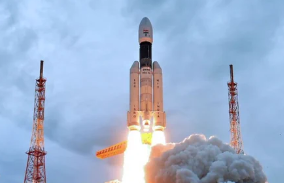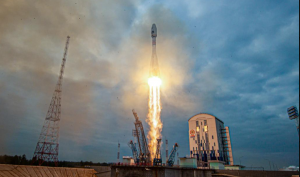Two years ago on this day, the Indian Space Research Organisation (ISRO) launched its second lunar expedition, Chandrayaan-2. As part of the mission, the lander – Vikram – was to touch down the moon’s surface, which was to be mapped by a rover – Pragyan. However, the landmark mission did not go as planned, as the lander deviated from its intended trajectory due to a software glitch and crashed on September 6, according to a failure analysis report submitted by ISRO.
Also Read: India’s next space expedition likely to be Mars Orbiter Mission-2
Today on the second anniversary of Chandrayaan-2 entering the lunar orbit, let’s analyse why the mission holds great significance for India’s future space exploration and all that we should know about the lunar programme.
What was the Chandrayaan-2 lunar mission?
India’s second lunar mission- Chandrayan consisted of an orbiter, a lander (Vikram), and a rover (Pragyan).
Also Read: Chandrayaan-2 mission’s initial data released for public: ISRO
The mission was launched to study and map the variation recorded on the surface composition of the Moon for the presence of water.
Why was Chandrayaan-2 is a historically significant space mission?
If the lander had successfully established the communication, it would have made India the fourth country after Russia, the US and China to achieve a soft-landing on the lunar surface. However, this is not only why the Chandrayaan-2 mission holds great value.
Also Read: Now private companies can enter India’s space sector, says ISRO’s new policy
It continues to be a landmark moment in India’s scientific history
as the lessons learned from this operation gave a push to attempt a new lunar exploration mission – Chandrayaan 3, which is being studied for launch this year.
Was Chandrayan-2 a failure?
No. The answer is a straight NO. According to an official statement by ISRO, even though the Vikram lander did not arrive on the surface of the Moon as planned, the spacecraft’s orbiter operations remain functional. Chandrayaan-2 orbiter, with its eight scientific instruments, will continue its seven-year mission to study the surface of the Moon.
Also Read: ISRO to launch geo imaging satellite GISAT-1 on August 12
Chandryaan-3
The Chandrayaan-3 mission is India’s third ambitious project to explore the Moon. The mission will be carried out in partnership with Japan and so far, does not include plans for another orbiter but is instead looking to re-attempt the landing and launch a rover on the Moon’s surface.
According to reports, the Chandrayaan-3 mission is expected to launch in the first half of 2022. However, this is just a tentative timeline.







